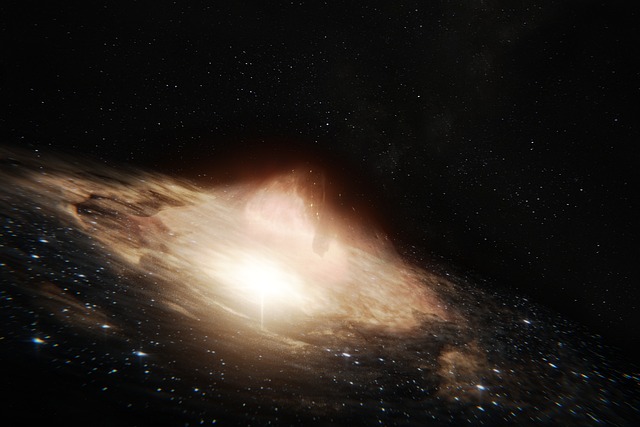Stellar, a blockchain protocol revolutionizing cross-border finance, has transitioned from centralized to decentralized governance. This shift aimed to balance accessibility and security while maintaining decision-making power among numerous nodes, addressing centralization's drawbacks. Stellar's Stellar Consensus Protocol (SCP) enables fast, secure transactions without a central authority, with users participating through staking XLM tokens. Its open-source nature and community involvement foster continuous improvement. Stellar's decentralized model enhances transparency, builds trust, and makes the network more robust. With plans to scale for diverse use cases, integrate smart contracts, and offer enhanced off-chain functionality, Stellar positions itself as a game-changer in the blockchain industry, empowering individuals and small businesses with greater asset control.
“Unveiling the transformative journey of Stellar’s governance, this article explores how decentralized technologies are reshaping financial systems. Initially facing a governance challenge with its centralized roots, Stellar embraced a new paradigm shift towards decentralization. We delve into the key components that make up its groundbreaking model, analyzing its benefits and impact on the ecosystem. Furthermore, we gaze into the future, examining prospects for scaling decentralization within the Stellar network.”
- Understanding Stellar and its Governance Challenge
- The Initial Centralized Approach
- Embracing Decentralization: A New Paradigm
- Key Components of Stellar's Decentralized Model
- Benefits and Impact on the Stellar Ecosystem
- Future Prospects: Scaling Decentralization in Stellar
Understanding Stellar and its Governance Challenge

Stellar, a decentralized protocol aiming to facilitate cross-border financial transactions, has emerged as a trailblazer in the realm of blockchain technology. Its core innovation lies in providing an open and accessible platform for various currencies, enabling seamless exchanges with minimal friction. However, alongside this success, Stellar faces a significant governance challenge—a common dilemma among decentralized networks.
The governance structure of Stellar involves a delicate balance between decentralization and coordination. As a distributed ledger, it relies on a consensus mechanism to ensure all nodes agree on the state of the network. Yet, achieving unity among numerous participants, each with varying interests, is no easy feat. This challenge is exacerbated by the desire for inclusivity and accessibility, which can sometimes clash with the need for robust security and decision-making efficiency. Understanding these dynamics is crucial in gauging Stellar’s journey towards a more decentralized governance model, where every participant has a say while maintaining the network’s integrity.
The Initial Centralized Approach

In its early days, Stellar, like many other blockchain projects, adopted a centralized governance model. This approach was characterized by a small group of key stakeholders who held significant control over the network’s decision-making processes. Centralization allowed for rapid decision-making and efficient implementation of changes, which were particularly important during the initial stages of the project when flexibility and adaptability were paramount.
The centralized nature of Stellar’s governance ensured that critical updates and features could be rolled out swiftly, catering to the evolving needs of its users and the broader community. However, as the network grew and a more robust, long-term governance framework became essential, the limitations of centralization became increasingly apparent. This realization paved the way for a revolutionary shift towards a decentralized governance model, marking a pivotal moment in Stellar’s evolution.
Embracing Decentralization: A New Paradigm

Stellar, a blockchain platform designed for fast and cheap cross-border transactions, has pioneered a new paradigm in governance within the cryptocurrency space. The project’s original centralized model evolved to embrace decentralization, marking a significant shift in its ecosystem. This transformation reflects a growing recognition that decentralized systems offer enhanced security, transparency, and community involvement—core principles for any innovative financial network.
By decentralizing decision-making processes, Stellar empowers its community members to participate actively in shaping the platform’s future. This new governance model ensures that power is distributed among various stakeholders, fostering a more democratic environment. The shift has not only strengthened the network’s resilience but also encouraged diverse perspectives and collective problem-solving, solidifying Stellar’s position as an industry leader in blockchain innovation.
Key Components of Stellar's Decentralized Model

Stellar’s decentralized governance model relies on several key components that ensure its unique and efficient structure. At its core, Stellar is built on a consensus protocol that allows for secure and fast transactions across its network. This protocol, known as Stellar Consensus Protocol (SCP), enables participants, or nodes, to reach agreement on the state of the ledger without relying on a centralized authority. SCP ensures that all transactions are validated and added to the blockchain in a transparent and consistent manner.
One of the standout features is its decentralized network of servers, or “stakers,” who collectively secure the system. These stakers hold Stellar’s native cryptocurrency, XLM, and participate in the consensus process by staking their tokens. This not only incentivizes participation but also ensures that the network remains robust and secure. Furthermore, Stellar’s open-source nature allows for community involvement in its development, fostering a collaborative environment where anyone can contribute to improving the protocol and governance model.
Benefits and Impact on the Stellar Ecosystem

The evolution of Stellar’s governance model is a testament to the power of decentralization, fostering a more democratic and robust ecosystem. One of the key benefits is enhanced transparency; all network participants have a say in decision-making processes, ensuring that changes are reflective of the community’s needs. This distributed approach promotes trust and encourages widespread adoption, as users feel empowered and invested in the platform’s future.
Furthermore, decentralization streamlines operations by removing centralized points of failure, making the Stellar network more resilient. It enables faster and more efficient consensus, crucial for handling high-volume transactions. This impact is particularly notable in today’s digital era, where speed and security are paramount for any financial technology. By embracing decentralization, Stellar continues to revolutionize the way we perceive and utilize digital currencies, solidifying its position as a game-changer in the blockchain space.
Future Prospects: Scaling Decentralization in Stellar

As Stellar continues to evolve, the potential for further decentralization holds immense promise. By leveraging blockchain technology and a robust consensus mechanism, Stellar can scale its network to support a broader range of use cases, from cross-border payments to decentralized finance (DeFi) applications. The key lies in expanding its reach beyond traditional financial institutions, empowering individual users and small businesses with greater control over their assets and transactions.
Through the integration of innovative solutions like smart contracts and improved off-chain functionality, Stellar can address current limitations and attract a diverse set of participants. This includes developers building decentralized applications (dApps), traders exploring new asset classes, and individuals seeking secure and efficient ways to manage their digital identities and data. By embracing these advancements, Stellar has the potential to become a leading force in shaping the future of global financial infrastructure.
Stellar’s journey towards a decentralized governance model represents a significant evolution in blockchain technology. By embracing decentralization, Stellar has not only addressed its initial governance challenges but also unlocked unprecedented levels of community engagement and participation. The key components of this model—including consensus mechanisms, token incentives, and on-chain governance—have collectively fostered a robust ecosystem. As Stellar continues to scale, the future prospects look promising, with further decentralization poised to enhance transparency, security, and accessibility, solidifying its position as a leading blockchain platform.
